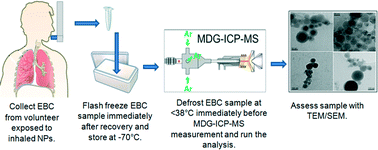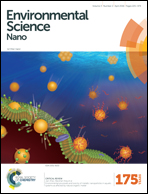A method for the preservation and determination of welding fume nanoparticles in exhaled breath condensate
Abstract
Analysis of exhaled breath condensate (EBC) represents a non-invasive method for detecting inhaled nanoparticles (NPs) associated with various occupational and environmental exposures. However, the few studies that have investigated inhaled NPs in EBC often assess only bulk, ionic intensities to provide information on overall elemental content, rather than on particulate content. In an attempt to assess inhaled metallic particles in their original particulate form, we developed a methodology for the preservation and determination of inhaled welding fume NPs in EBC. Two EBC preservation strategies were tested: flash-freezing EBC immediately after collection and keeping EBC at room temperature until analysis. The particle content of the differently preserved samples was assessed by microdroplet generation inductively coupled plasma mass spectrometry (MDG-ICP-MS) and electron microscopy.
•Welding fume NPs in EBC may quickly and uncontrollably degrade, thereby losing their original form and hampering effective characterization analysis.
•We demonstrate the importance of flash freezing EBC samples immediately after collection and defrosting them shortly before analysis at a temperature that does not affect proteins and peptides (<38°C) in order to effectively preserve NPs in particulate form.
•This methodology can be applied easily, effectively, and inexpensively to preserve EBC samples for future NP content determination and characterization.


 Please wait while we load your content...
Please wait while we load your content...